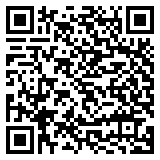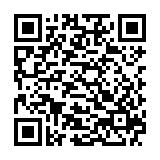In today’s world, language doesn’t just communicate information—it connects people, preserves culture, and builds trust. And in countries or communities where multiple languages are spoken, recognizing every voice through language inclusion isn’t just respectful—it’s essential.
Language access ensures no one is left out of the conversation, whether in a courtroom, a classroom, a hospital, or a city hall meeting. That’s where interpreting services step in—not just as translators of words but as builders of bridges.
Why Language Inclusion Matters
Language is deeply tied to who we are. It carries our stories, humor, emotions, and even sense of belonging. When a society acknowledges and supports the different languages its people speak, it’s doing more than just ticking a box. It’s saying:
“You matter. You belong here. Your voice will be heard.”
This kind of inclusion fosters social unity—not by forcing everyone to speak the same language, but by giving everyone access to the same information and opportunities, regardless of what language they speak.
Multilingual Communities Need More Than Words
Countries like Canada, Switzerland, and South Africa don’t just allow people to speak different languages—they make them official. That means public services, education, and legal systems need to operate in multiple languages every single day.
But it’s not just about countries. Cities, schools, hospitals, and businesses around the world are becoming more linguistically diverse than ever. And even if your country has only one official language, chances are your community doesn’t.
That’s why interpreting—whether in person, over the phone, or via video—isn’t just helpful anymore. It’s crucial.
How Interpreting Builds Bridges
Imagine you’re a parent attending a parent-teacher conference, but you don’t understand the teacher’s language. Imagine you’re a patient trying to explain your symptoms in an emergency room, but the nurse speaks a language you don’t. Imagine you’re giving testimony in court, but the legal system doesn’t operate in your mother tongue.
Now imagine someone steps in, calmly and professionally interpreting every word you say—and everything being said to you. Suddenly, you’re part of the conversation. You’re informed, empowered, and respected.
That’s what interpreters do.
Interpreting = Language Inclusion in Action
At its core, interpreting is more than converting one language into another. It’s about equal access. It’s about making sure immigrants, refugees, tourists, Deaf individuals, and multilingual families can participate fully in life, just like everyone else.
When governments, schools, and businesses invest in interpreting services, they’re making a powerful statement:
“We’re not just tolerating diversity—we’re embracing it.”
The Big Picture: A More United World
Unity doesn’t come from forcing people to fit into one mold. It comes from recognizing our differences—and finding ways to connect across them. Language is one of the most powerful tools for doing just that.
So, whether your organization serves five languages or fifty, know this: prioritizing interpretation and language access isn’t just good service—it’s a pathway to inclusion, equity, and trust.
And at the end of the day, unity isn’t about everyone speaking the same language—it’s about everyone being heard.
Need Support with Interpreting?
Whether you need on-site interpreters, remote solutions, or interpreting for a specific industry (like healthcare, legal, or education), we’re here to help. Our mission? Breaking down language barriers so everyone can take part.
Get in touch to learn more about our interpreting services—and let’s build a more connected world, one conversation at a time.





0 Comments